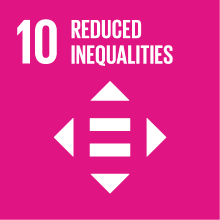COLLOQUIAL ARABIC
- Academic year
- 2019/2020 Syllabus of previous years
- Official course title
- LINGUA ARABA COLLOQUIALE
- Course code
- LT014C (AF:272258 AR:158358)
- Teaching language
- Italian
- Modality
- On campus classes
- ECTS credits
- 6
- Degree level
- Bachelor's Degree Programme
- Academic Discipline
- L-OR/12
- Period
- 2nd Semester
- Course year
- 2
- Where
- VENEZIA
- Moodle
- Go to Moodle page
Contribution of the course to the overall degree programme goals
Its educational goals concern language proficiency building.
The course aims at meeting needs linked to Arabic diglossia.
The colloquial Arabic variety proposed is Egyptian , i.e., Cairene dialect, which enjoys the status of a national vernacular in Egypt and, thanks to the vast circulation of Egyptian audiovisuals, is widespread in the Arabophone world where it serves almost as a lingua franca for oral communication. It is also widely used in literary texts and to write short text messages and online communications.
In order to achieve its educational goals, the course applies a communicative-situational approach and provides: knowledge of elementary-level Egyptian Arabic grammar and other tools needed to develop listening, speaking, reading and writing skills in Egyptian.
The course is addressed to second and third year students of Arabic Language.
Expected learning outcomes
1. Knowledge and understanding.
Students will be able to know and understand:
- the phonic characteristics of Egyptian Colloquial Arabic;
- the main morphosyntactic characteristics of Egyptian Arabic concerning sentence syntax, demonstrative adjectives and pronouns, the dual form, suffixed pronouns, verbs, use of the active participle, negation;
- approximately 1200 words;
- key sentences and phrases needed to interact in oral communicative situations faced while performing simple routine activities and travelling in Egypt;
- the specific metalinguistic terminology used to describe the morphosyntactic phenomena studied during the course.
2. Ability to apply knowledge and understanding.
Students will be able to:
- produce the typical Egyptian Arabic pronunciation;
- read simple texts in non-vocalized Egyptian Arabic;
- interact in oral communication situations associated with A2+ level of the CEFR;
- understand and produce simple oral texts on familiar topics, daily activities and immediate needs (A2 level of the CEFR), as well as on experiences and events, hopes and projects (B1);
- understand and produce short simple written texts on familiar topics, daily activities and immediate needs (A2);
- describe morphosyntactic phenomena studied during the course, using the appropriate metalinguistic terminology.
3. Ability to judge.
Students will be able to:
- choose the appropriate language register and vocative according to the communicative situation and the interlocutor;
- use the tools included in the referral textbook and related audio support to evaluate your level of language skills.
4. Communication skills.
Students will be able to:
- interact with peers and with the teacher during lessons, as well as in other oral communication situations characteristically associated with A2 level of the CEFR;
- produce oral and written texts having characteristically associated with A2 level of the CEFR, as well as simple texts describing experiences and plans;
- describe morphosyntactic phenomena using the appropriate terminology.
5. Learning capabilities.
Students will be able to:
- combine proficiency in Colloquial Arabic and Standard Arabic to cope with the diglottic situation of the Arabophone world;
- develop skills acquired during the course to undertake higher studies.
Pre-requirements
Contents
Dialogues concerning: greeting people and introducing oneself; relatives and friends; colours and clothing; work and study activities; transport and road information; ordering in coffee shops and restaurants; food and beverages; housework; hobbies and holidays; money and shopping; banking and postal services; the house and looking for a furnished flat to rent; climate; health; currency exchange; airport formalities; social and cultural life.
Referral texts
Recommended:
Badawi, El-Said, Hinds, Martin, A Dictionary of Egyptian Arabic. Arabic-English, Beirut: Librairie du Liban, 1986 (downloadable).
Assessment methods
Type of exam
Teaching methods
Attendance is not compulsory, but it is strongly recommended.
Attending students will be advised to listen, independently before each lesson, to the audio recording of the texts that will be dealt with during the lesson itself.
There is no program for non-attending students who can prepare for the exam by studying the referral text on their own. .
2030 Agenda for Sustainable Development Goals
This subject deals with topics related to the macro-area "Poverty and inequalities" and contributes to the achievement of one or more goals of U. N. Agenda for Sustainable Development




